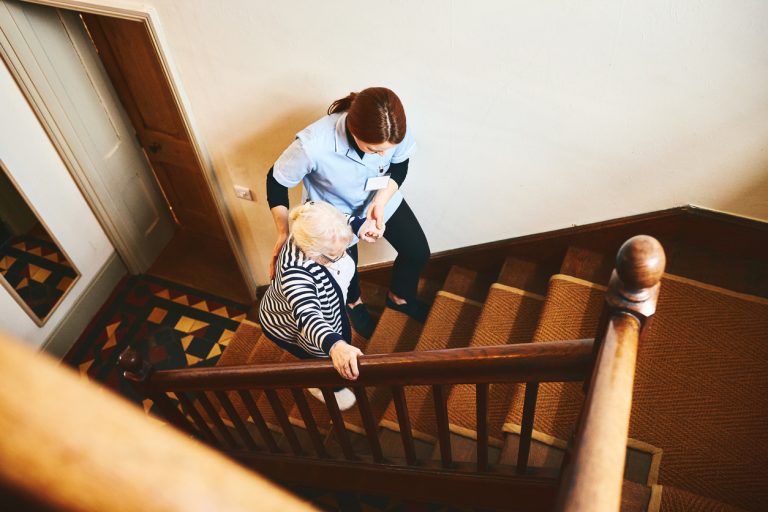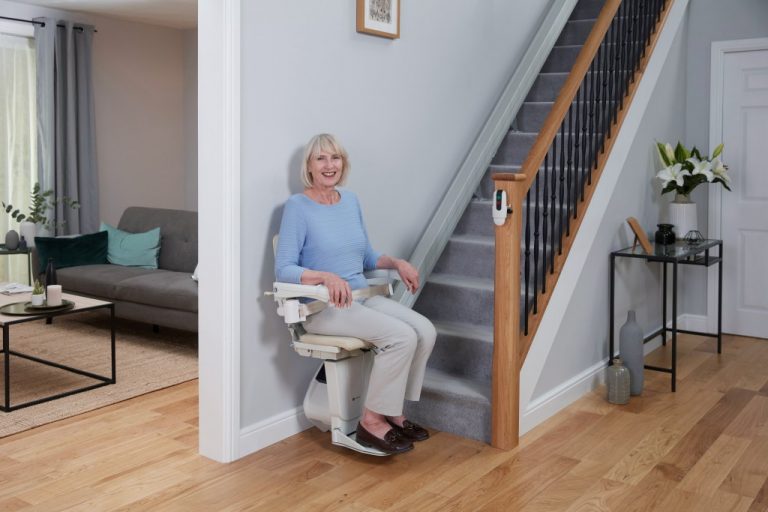Stair Safety Guide for Individuals with Dementia
Are you a carer for a loved one with dementia? If so, you might be concerned about them navigating stairs.
In this article, we’ll explore practical tips for stair safety and discuss how stairlifts can be a reliable solution.
Assessing Stair Safety
Before implementing any changes, you should assess your loved one’s ability to use the stairs safely. Consider factors such as their physical strength, balance, vision and level of dementia. Observe them as they use the stairs and look for any signs of difficulty or discomfort.

Improving Stair Safety
If your loved one is still able to use the stairs but could use some extra support, there are several steps you can take to walking safer:
- Install sturdy handrails
Ensure that handrails are securely fitted on both sides of the staircase. They should be easy to grip and extend beyond the top and bottom steps.
- Remove tripping hazards
Keep the stairs clear of any clutter.
- Improve lighting
Adequate lighting is essential to navigate the stairs safely. Install bright, even lighting for the entire staircase. You could even consider motion-activated lights for added convenience.
- Use visual cues
Place coloured tape or paint a contrasting strip on the edge of each step to make them more visible. This can help distinguish between steps and reduce the risk of trips or falls.
Getting a stairlift
If your loved one’s dementia has progressed to a point where using the stairs becomes too challenging or risky, a stairlift can be an excellent solution. Stairlifts are designed to transport individuals safely up and down the stairs, reducing the risk of falls and allowing them to maintain their independence.

When considering a stairlift for someone with dementia, it’s important to choose a model that is easy to use and understand. Look for features such as:
- Simple controls
Opt for a stairlift with large, clearly labelled buttons or a joystick that is easy to operate.
- Safety sensors
Ensure that the stairlift has sensors that can detect obstacles on the stairs.
- Comfortable seating
Choose a stairlift with a comfortable seat and adjustable armrests.
- Swivel seat
A swivel seat allows the user to rotate and exit the stairlift safely at the top of the stairs.
We also recommend providing training and support when introducing a stairlift. Demonstrate how to use it and practice with your loved one until they feel confident.
If you’d like to get a stairlift for your loved one, look no further than Ideas in Action. We are the Midland’s premier mobility centre. We offer a wide selection of stairlifts for all needs and budgets. Choose from straight stairlifts, curved stairlifts and even stairlifts for rent.
